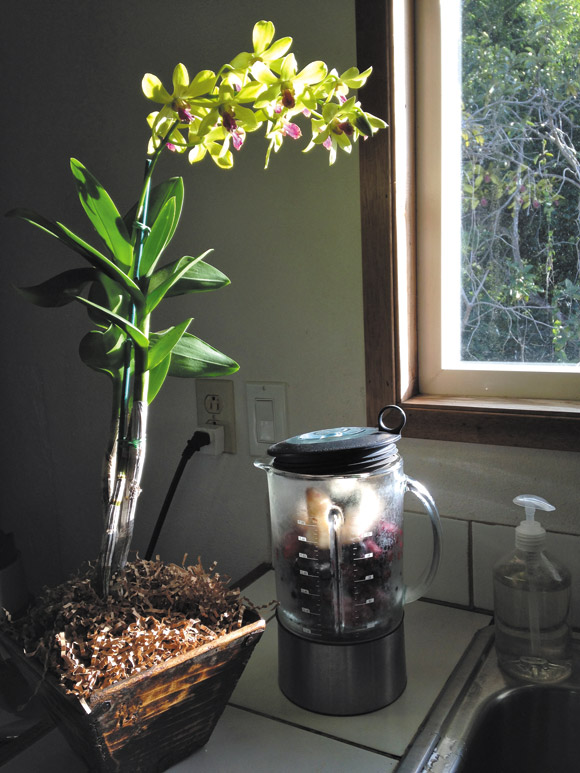There’s No Place Like Home
I always was ashamed of the house in which I was raised. I told myself that when I grew up, I would live in an ordinary one, maybe even an extraordinary one. Our farm dwelling was one of the first on our road, built by my father’s family. Seven of us lived in the original two-bedroom, one-bath wooden structure built with single walls of rough, irregular boards battened with narrow vertical strips to cover the seams. The inside was similar except for a wainscotting embellishment … I exaggerate — it was just 2-by-4 horizontal supports.
A narrow, sunken, covered lanai led to four small rooms, including a tiny kitchen with an L-shaped counter just big enough to hold a cutting board, dish rack,
Osterizer, toaster, can opener and percolator. Knives were stored between two slats of wood attached to the inside cabinet door.
Squeezed into the room was a simple, rustic Formica-topped kitchen table doubling for food prep and dining. A matching unpainted picnic bench was wedged beside the table and below a window with patched screens.
Next to the kitchen was a tiny room with a white ceramic sink supported by exposed plumbing and an incessantly running toilet. If occupied, another toilet was 60 feet away outside via a long, narrow, unsophisticated concrete walkway and down some dirt steps braced by loose rocks and weeds. The deep hole in the ground was covered by a small, decaying wooden shell and a rusting corrugated roof.
A few concrete steps down from the lanai was a bath house encased in rough, hand-troweled, unpainted concrete walls and floor with two small, cracked painted glass-paned windows and a small, rickety barn door. Crude galvanized pipes led to hot and cold water spigots positioned at the edge of a deep concrete tub. Adjacent to the tub was another galvanized pipe rising a little more than head-high, then bent at the top to accommodate a downward shower spout. An old gas water heater nearby was lit every afternoon by match-stick.
A very rustic country life it was, and I wouldn’t dare invite my town friends over. My mother thought nothing of inviting hers, though. She once hosted a Japanese native and, as a memento, they stood in front of our house for a Polaroid photo. But why? The house was nothing special, its rough, faded-green stain yellowing with age, its once red-tiled roof revealing its concrete composition, and the rustred front porch was unremarkable.
But it was special. Later in life, I found myself drawn to rustic, unpainted or faded structures, mostly rough-sawn and board-and-battened. If they were painted, I would prefer a particular green, in fact, yellowed with a matte finish, or a rustic red. And exposed plumbing was chic.
More recently, I am fond of small spaces, and when I squeeze my tiny cutting board between the edge of my kitchen counter and the sink, I am strangely comfortable. That’s when I’m not prepping food on the farm kitchen table, which now doubles as a dining surface.
I’ve found that it’s not so much the dwellings themselves but what they evoke that gives them value. Like my childhood memories of the pungent, soothing Hills Bros. coffee percolating. Or how the kitchen bench brought hilarious outbursts when tipped by the weight of those who first scooted to the far end. Or the knife storage being a clever space-saving solution. Or the long walk to the outhouse lined with red button and lilikoi-scented orange roses, dendrobium and cattleya orchids, and scarlet cardinals alighted on sprawling poinsettia of the same red.
Bringing back my past — abnormalities, deficiencies and all — is an attempt to resurrect all that was honest and good surrounding that life. I didn’t know it back then, but my home — in other words, my life — already was extraordinary.




